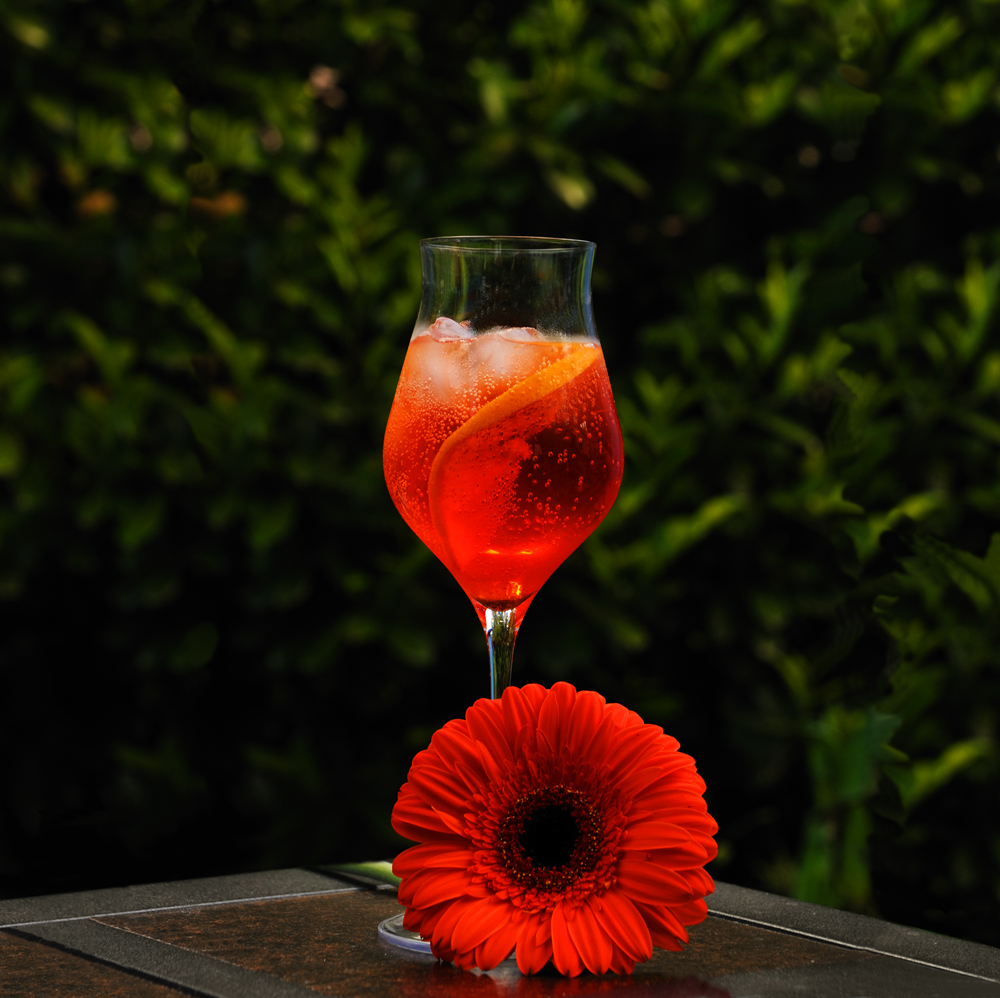
As summer approaches, and in some regions, arrives with its full blaze, it’s time to turn our thoughts toward something as light, refreshing, and radiant as the season itself. Consider the Aperol Spritz, the quintessential summer cocktail of Northern Italy. It’s often said that Italians possess an innate understanding of summer’s essence, and this drink, with its cheerful orange hue, is a testament to that claim.
During my two most recent visits to a sweltering Europe, I found solace in the Aperol Spritz, an ideal elixir for cooling down. Picture this: lounging in the shade of a parasol at an open-air café, an oversized glass brimming with ice that cools your hands, and the refreshingly invigorating libation that effortlessly weaves harmony with the sun-baked stones surrounding you.
Aperol Spritz finds its heart in the bitter spirit known as Aperol, an invention credited to brothers Luigi and Silvio Barbieri of Padua, whose company commenced its production in 1919. Aperol, in essence, is a quintessential digestive bitter.
Allow me to digress briefly to delve into the world of bitters. Bitters are complex alcohol infusions crafted from a melange of fruits, roots, bark, and herbs, all boasting distinctive bitter notes. Originally conceived as medicinal tonics, renowned brands like Angostura, for instance, found their roots in remedies for seasickness and digestive issues. Over time, bitters transcended their medicinal origins and began to be incorporated into aperitifs and, later, purely for the pleasure they brought. The range of bitterness and alcohol content varies among different bitters, although many of them fall under the category of hard liquors. Bitters can be categorized as cocktail bitters and digestive bitters, with the former being more concentrated and typically used as enhancements in cocktails, while the latter are often enjoyed neat or with ice, yet also find their way into mixed drinks.

Aperol, with its low alcohol content of 11% ABV, offers a mild bitterness complemented by a hint of sweetness. Its formula, a closely guarded trade secret, comprises thirty different botanicals, including sweet and bitter oranges, rhubarb, gentian, cinchona, and various herbs sourced from Northern Italy, creating its signature vibrant orange hue.
The surge in Aperol’s popularity came about post-World War II, once Aperol Spritz was introduced. As a result, Aperol went on to become Italy’s most beloved bitter. In 2003, the Campari Group acquired the Barbieri company, further propelling Aperol’s renown.
But what of “Spritz” cocktails, you might wonder? The term “Spritz” has its origins in Austro-Hungary during the 19th century, where it was used to signify lightening (or spritzing) German wines. This involved adding a splash of water to the more potent North Italian wines, creating a taste more suited to their palates. It wasn’t until the 20th century that “spritz” adopted its modern meaning: a wine-based cocktail infused with bitters and a splash of soda. The cocktail’s name, as you might have guessed, is defined by the specific bitter employed.
Enter the Aperol Spritz:
Ingredients:
Aperol, Prosecco, soda, ice, orange wheel for garnish.
Process:
Begin with a chilled glass, ideally a wine or old-fashioned glass, filled with cubed ice. Proceed to pour in Prosecco, followed by Aperol, then add a gentle splash of soda. Mix the contents with a straw or small spoon if needed, garnish with a slice of orange. A straw is often included in its presentation. Ensure all the ingredients are suitably chilled.
For the standard recipe:
•3 parts Prosecco
•2 parts Aperol
•1 splash soda
•An orange wheel for garnish
These proportions are not carved on the stone; you can adjust them to your taste. If you prefer a less bitter cocktail, reduce the amount of Aperol and increase the sparkling wine. If you want a lighter drink, add more soda. It’s best to use brut to balance the sweetness of Aperol.
Prosecco can be replaced with any brut. In some regions, still dry white wine is used instead of sparkling wine, and the orange wheel is replaced with olives.
Maintaining the integrity of your Aperol Spritz involves using cubed ice rather than crushed ice to prevent rapid dilution and the subsequent loss of flavor. A recommended method involves adding Aperol after the Prosecco, preserving the effervescence. Opting for dry Prosecco (or brut) helps balance Aperol’s sweetness, rendering a harmonious cocktail.
The Aperol Spritz is the perfect accompaniment to sweltering summer.
Visit my online store for a unique poster featuring this cocktail, along with many other beautiful cocktails and other wine-related subjects.
It’s the perfect way to add a touch of sophistication to your kitchen or bar. Click here to shop now!